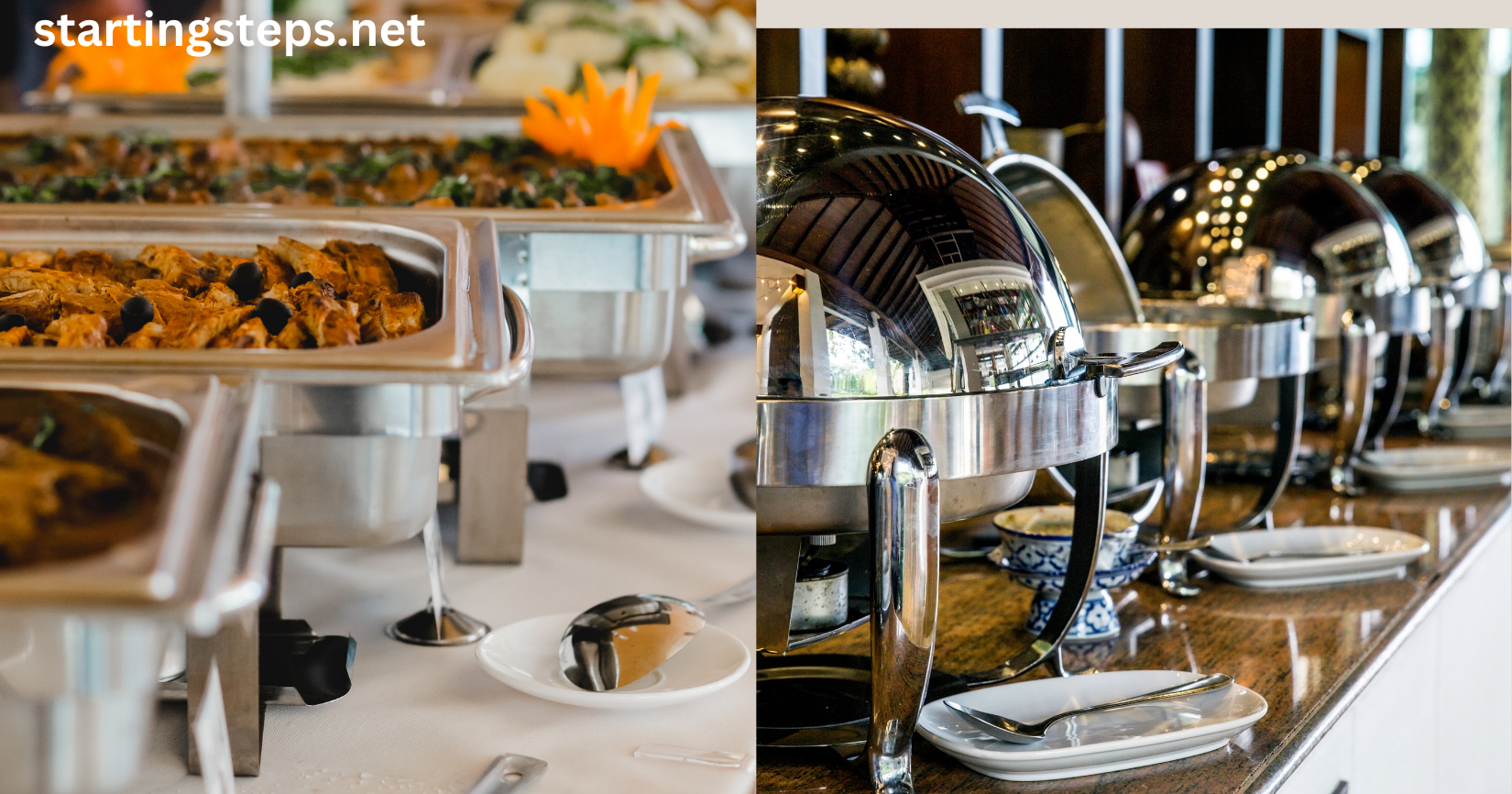Starting a catering business requires planning, investment, and a clear strategy. Whether you want to serve small events or large corporate gatherings, understanding the requirements will help you succeed.
Steps to Start a Catering Business
Research the Catering Industry
- Understand market demand in your area
- Identify your target audience
- Analyze competitors and pricing
Create a Business Plan
A catering business plan helps define goals and strategies. It should include:
- Business model (full-service, buffet, or specialized catering)
- Menu options and pricing
- Financial projections
- Marketing strategy
Choose a Business Structure
Selecting the right structure affects taxes and liability. Common options include:
- Sole proprietorship
- LLC (Limited Liability Company)
- Corporation
Obtain Necessary Licenses and Permits
To operate legally, catering businesses need:
- Food service licenses
- Health department permits
- Business registration
Set Up a Commercial Kitchen
Catering businesses must follow health regulations. Options include:
- Renting a commercial kitchen
- Building a kitchen in compliance with laws
Purchase Equipment and Supplies
Essential equipment includes:
- Ovens and stovetops
- Refrigeration units
- Food transport containers
| Equipment | Estimated Cost ($) |
|---|---|
| Commercial oven | 3,000 – 10,000 |
| Refrigeration unit | 1,500 – 5,000 |
| Serving trays | 50 – 500 |
Develop a Marketing Strategy
Promote your catering business using:
- Social media marketing
- Local partnerships
- Website and SEO strategies
Costs of Starting a Catering Business
The startup costs depend on location, scale, and kitchen setup. Below is a breakdown:
| Expense Category | Estimated Cost ($) |
|---|---|
| Kitchen setup | 10,000 – 50,000 |
| Licensing & permits | 500 – 5,000 |
| Marketing | 1,000 – 10,000 |
| Staff salaries | 3,000 – 20,000 |
How Profitable is a Catering Business?
Catering businesses can generate high profit margins due to bulk food purchasing and pre-planned services. The profitability depends on:
- Number of clients per month
- Average price per event
- Operational efficiency
| Revenue Factor | Average Value |
|---|---|
| Clients per month | 10 – 50 |
| Revenue per event | 500 – 5,000 |
| Monthly profit | 2,000 – 15,000 |
How to Market a Catering Business
Marketing is key to attracting clients. Some strategies include:
- Networking with event planners
- Offering food tastings for potential clients
- Running online ads on Google and social media
Common Challenges in Catering Business
Catering involves logistics and planning. Some common challenges include:
- Managing food waste
- Handling last-minute client requests
- Staffing for large events
| Challenge | Solution |
|---|---|
| High food waste | Pre-plan portions |
| Unpredictable demand | Offer flexible packages |
| Last-minute changes | Keep backup ingredients |
Conclusion
Starting a catering business requires planning, investment, and compliance with health regulations. A strong marketing strategy, efficient operations, and customer service are key to long-term success. Researching the industry, obtaining necessary permits, and setting up a proper kitchen will set you on the path to running a profitable catering business.
FAQs
How much does it cost to start a catering business?
Startup costs vary but typically range from $10,000 to $50,000, depending on kitchen setup, equipment, and licensing.
Do I need a license to start a catering business?
Yes, catering businesses require food service permits, health department approval, and business registration.
Can I run a catering business from home?
Some states allow home-based catering with special permits. Check local health regulations before starting.
How profitable is a small catering business?
A small catering business can earn between $2,000 and $15,000 per month, depending on client volume and pricing.
What are the biggest challenges in catering?
Challenges include food waste management, client expectations, and staffing for large events. Proper planning helps overcome these issues.
